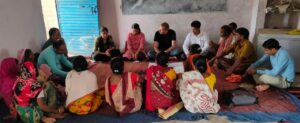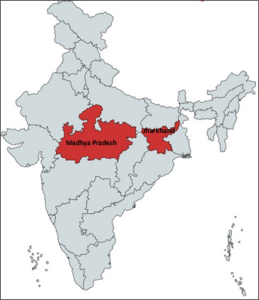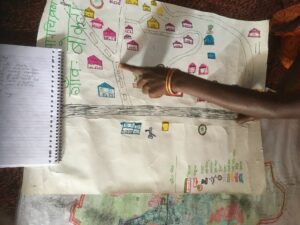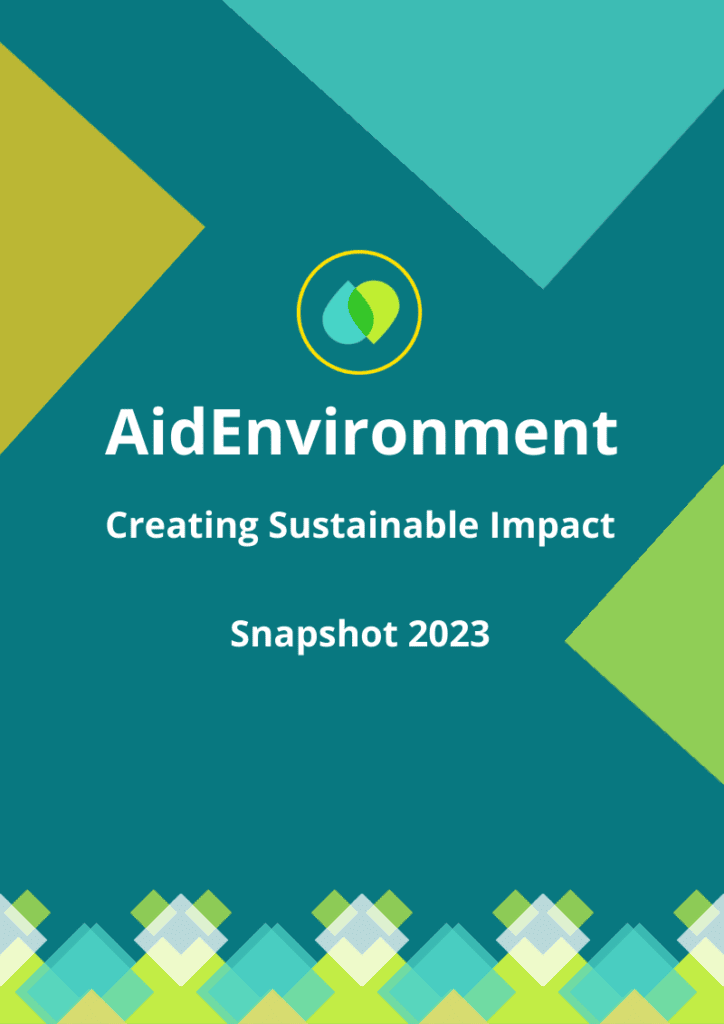Site Visit Surfaces Pilot Approaches to INRM for Green Transformation Pathways (GTP) Project in India

AidEnvironment Senior Programme Manager Niels Lenderink, along with Junior Expert Jyoti Mishra, organized a field visit and meeting under the Green Transformation Pathways (GTP) project on July 6-7, 2022 in Ranchi, Jharkhand State, India. The goal of the meeting, which had participants from partner organizations, Professional Assistance For Development Action (PRADAN), Foundation for Ecological Security (FES), and the Dutch MetaMeta, was to agree on the approach to Integrated Natural Resources Management (INRM) within GTP.
Why India?
In the rural districts of Madya Pradesh and Jharkhand states in India, rain-fed subsistence agriculture is the main source of livelihood for a large majority of households. However, 35% of the land area is degraded and eroded due to deforestation coupled with heavy rainfall. This leads to low agricultural productivity, which results in poverty. 41% of households in Agro-climatic Zone 7 (covering the states of Jharkhand, Madhya Pradesh, Odisha and West Bengal) live below the poverty line.
Women play a central role in farming but their contributions are not recognized. Men mainly do the ploughing of the soil and then move to other towns and cities in India or abroad to earn money. Women are then tasked to do most of the remaining agricultural tasks such as sowing, watering, weeding, applying herbicides or pesticides, harvesting, and more.
How does GTP help?
The Green Transformation Pathways project aims to create a vibrant economy by transforming the rural economy through sustainable land and water resources use, regenerative agriculture, and local value chains that allow for women’s contributions to be acknowledged, supported, and rewarded. Specifics on how best to enable these conditions will be determined during the coming year when fact finding surveys will be carried out, including interviews with both female and male farmers.
The GTP project is implemented in rural districts of Madya Pradesh and Jharkhand states in India, and is funded by the IKEA Foundation. One of the four main elements of the project is INRM, which refers to integrated and sustainable ways of managing natural resources. One example is Integrated Water Resources Management which entails balancing the different uses of water such as drinking, hygiene, irrigation, and the use of water for livestock and the environment. This can be done by gaining a better understanding of the flow of water within the area, from the moment a raindrop falls on the ground until the moment it leaves the area e.g., as part of a river. This is called catchment management. Comparable approaches will be used for other natural resources including land, soil, nutrients, and energy.
Improving water management
A visit to one of the watershed management interventions led participants of the partner organizations to discuss what INRM in GTP should look like. Pradan already implements INRM, but the existing approach does not involve studying the flow of the groundwater or using the opportunities presented by common lands (like forests) to better manage the water in the area. As the GTP project evolves, this existing approach will be complemented with micro-climate management and participatory common lands and groundwater management. An improved approach to INRM can lead to a structural recharge of the groundwater, which could benefit all water users in the communities: people, livestock, crops and the environment. These new approaches will be introduced and piloted during the coming year and a half, from now until the end of 2023.







![[PRESS RELEASE] Onderzoek World Animal Protection: AH en Makro verkopen nog altijd ontbossingsvlees](https://aidenvironment.org/wp-content/uploads/2024/01/2-150x150.png)